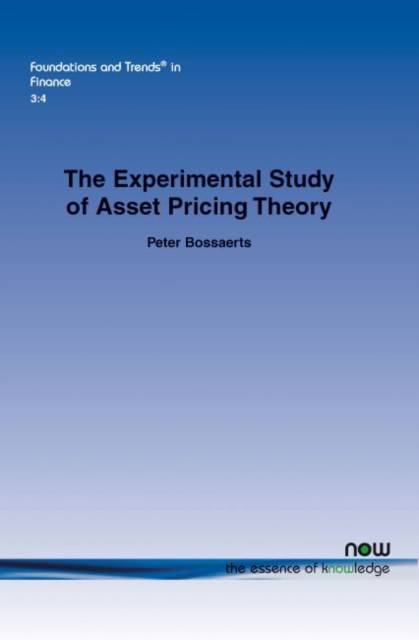
- Afhalen na 1 uur in een winkel met voorraad
- Gratis thuislevering in België vanaf € 30
- Ruim aanbod met 7 miljoen producten
- Afhalen na 1 uur in een winkel met voorraad
- Gratis thuislevering in België vanaf € 30
- Ruim aanbod met 7 miljoen producten
Zoeken
Omschrijving
The first review of experimentation in asset pricing, which is both rare and novel. The goal of experimentation is twofold. First, experimentation is meant to evaluate the science behind asset pricing theory. Second, the goal of experimentation is to come to a deeper understanding of asset pricing theory.
Specificaties
Betrokkenen
- Auteur(s):
- Uitgeverij:
Inhoud
- Aantal bladzijden:
- 90
- Reeks:
Eigenschappen
- Productcode (EAN):
- 9781601982926
- Verschijningsdatum:
- 5/11/2009
- Uitvoering:
- Paperback
- Afmetingen:
- 159 mm x 231 mm
- Gewicht:
- 144 g

Alleen bij Standaard Boekhandel
+ 162 punten op je klantenkaart van Standaard Boekhandel
Beoordelingen
We publiceren alleen reviews die voldoen aan de voorwaarden voor reviews. Bekijk onze voorwaarden voor reviews.








